This is what a sustainable ecological culture means: It is not about sustainable materials or sustainable economics or sustainable political laws themselves—these all change with the winds—but rather, about figuring out an underlying cultural mindset that helps us to understand who we are, and how we relate to each other and to this living earth.
In the most densely populated city in the developed world, people walk to work through a forest instead of driving in traffic. They take vacations on the metro, family picnics on the edge of a cliff, and routinely walk from their doorstep into a vast urban national park called Bukhansan. This photo essay, originally published at The Possible City, is a reflection on time lived in Seoul, and also an inquiry. It asks what it means to have access to nature, and whether examples from Korea might help other cities become more resilient.
The images in this series were taken over a period of seven years, during which I made frequent visits to Bukhansan. While reading, I suggest the images can serve as points to stop and meditate. Take a deep breath and spend some time with each image, see what you notice, and consider how it makes you feel before continuing. That’s just a suggestion. However you do it, I hope you enjoy the little journey with me!
**

It’s an hour now since the sun was supposed to come up. Outside the apartment window, a low mist hangs around the east side of this small valley. The granite cliffs of Bukhansan National Park poke out through it in places, rising above the tops of several dozen apartment towers.
Later in the day, I have a lunch meeting in the Bulgwang district, about twenty minutes from here on the metro. On this particular morning, however, I throw on a jacket and leave home early. There is something important that needs attending to.
Outside, autumn is waning. The light wind coming down the valley will soon be flicking away the last of the leaves. The metro station is due West of here, but I decide to walk east instead, along the stream and up into the mist at the foot of the mountains.
Getting from here to the Bulgwang district on foot will take a few hours of hiking—through forests, past small farms and mountain Buddhist temples, and across the pass just below Dobongsan—but I will eventually arrive, by my own feet, at the same physical place the subway would take me. I do not always get up early enough for this commute. I much prefer it when I do though.
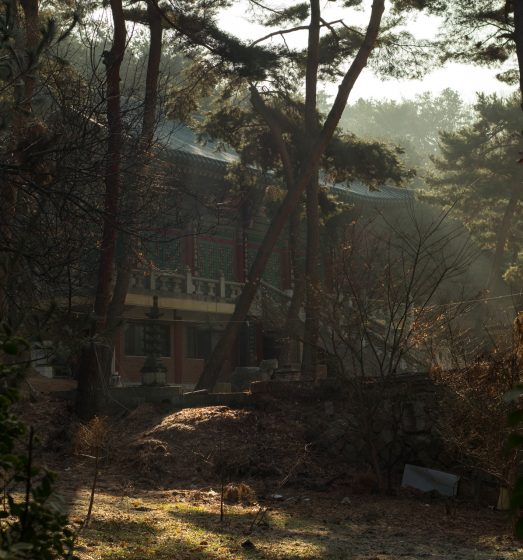
The extra time it takes to reach my destination via the mountain may seem ridiculous when compared to driving, or taking the subway, or even walking along a sidewalk — indeed, all of these methods are faster than the mountain path. However, this “hike to work” has never once seemed like wasted time. Instead, it feels more like a gift of time, where I can experience the reality of life on this earth in ways that are not possible through the more rapid means of human movement.
In the forest, this word reality means something different from our typical urban usage of the word. Reality, here, is in the things that might at first seem mundane. It is in the fallen leaf, supporting the health of spores and microbial life that make a healthy soil possible; it is in the mist I walk through, supporting the life of the moss, lichen, and green algae as they absorb atmospheric carbon from their home on a shaded rock; it is in the water that trickles up from a spring, a tributary for all of the life—fish, waterfowl, plant, human, and otherwise—that takes place downstream.
The very freedom of being able to move through this landscape, to experience it, and to take part in these small bits of wonder offers a much-needed dose of ecological reality. However, it is also a privilege that not many urban dwellers are allowed to enjoy.
Partly for that reason, this ecological reality might seem far remote from our own daily realities and struggles. In truth, however, it is far closer than we think. The reality of walking through a mountain is of course different than the reality of our bank accounts, our jobs, our social lives, and appointment schedules, but it is profoundly connected to them, for all of these latter realities, in various ways, rely on the former. Without healthy forest ecosystems, and healthy watersheds within and around them, all life on this Earth suffers greatly.

The ultimate reality of the forest is that its health allows for the very possibility of a healthy city existing. There are plenty of cities that dismiss such ideas as unimportant and emanating from these cities we find piles of data on the ill effects of such a dismissal. People who live in cities without healthy forests are more likely to suffer from ill health, have higher instances of preventable diseases, tend to die earlier, have higher stress levels, higher blood pressure, and even higher rates of mortality during the pandemic.
On the other hand, numerous studies done during the past few decades suggest that humans who regularly visit or live near healthy forest ecosystems—not just parks, but forests—enjoy longer lifespans, lower instances of depression, lower blood pressure, stronger immune systems, and are even protected by trees against many cancers.
Can forests really do that? Apparently, they can, and they do.
The fact that healthy forests, meadows, and riparian corridors are not weaving their way through every neighborhood is a good sign that we are not paying close attention to how absolutely reliant our health is, on the health of ecosystems inside and around our cities.
Making space for resilient, biodiverse, living forests and watersheds inside our cities, and allowing practical access to these spaces, plays a big role not only in human resilience and health but, more broadly, in helping cultivate more ecological mindsets and habits.
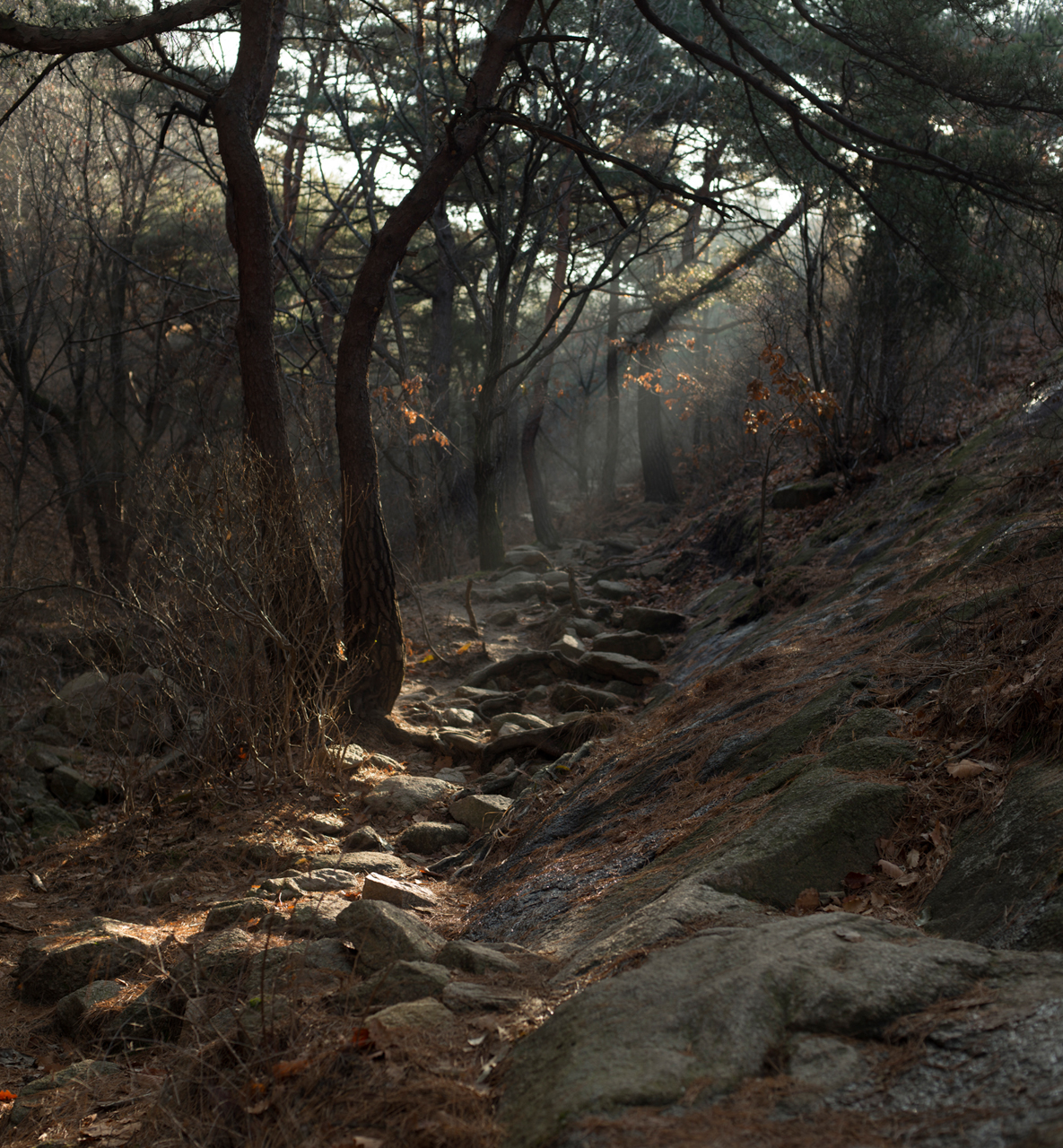
Entering the edge of the forest, I pass Sunlimsa, the first of several Buddhist temples on this walking route. The temple reminds me of something my father-in-law says when he talks of meditation: Every day, every time, you should ask, who am I?
He tells me this repeatedly whenever we visit while holding his hands in a Buddhist meditation pose. Who am I. Who am I.
I like this provocation. It never seems to get old, because who am I is not a question we really ever find a concrete answer to. So far as my father-in-law is concerned, the answer is more a state of acknowledgement, an acceptance of the conditions in each moment, rather than a conclusion.
It can be immensely difficult to wrap our heads around such a concept. Credit much of this difficulty to the human tendency of considering our role in nature only as intellectual beings. We commonly do this through reports, presentations, and meetings, or through data, measurements, and statistics. This is one way of looking at the components of human and earth, and at times it can be very useful. But there are other ways to know our relationship with the earth. A commute through a small, forested mountain shows us something beyond our existence as intellectual beings.
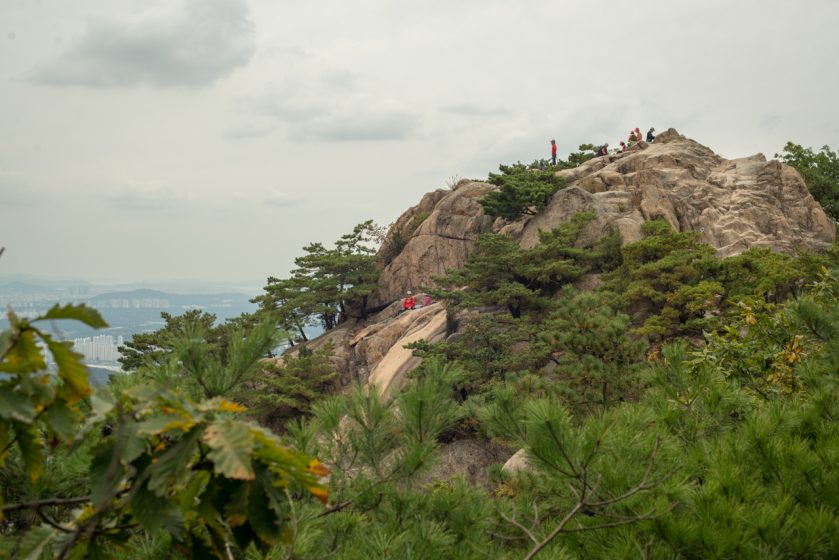
Here in the mountain, we can see the reality of who we are as ecological beings. Here in the mountain, it becomes clear that the climate movement cannot succeed, the regenerative city movement cannot succeed, no ecological movement will ever truly succeed unless this frame of reference—one where we are all embedded in nature in various ways—becomes part of the story.
Continuing up along a ridgeline, mist dissipates, a bit of sweat emerges. Blue sky above. Looking to the left from atop the ridge, the peaks of Bukhansan rise from the forest, with a Buddhist temple tucked into the foliage. Looking to the right, the densely packed alleys of the old Bulgwang district ramble through their magnificent maze.
We walk the line between two worlds here. A good place to ask that question, who am I?
** Answers Come When We Are Close to Nature **
Standing on this ridge line between the urban and the forest world, I turn to address the mountain with some thoughts. I ask:
This whole deal of walking through the forest and mountain to get to work in the city seems like a fantasy. Should I slap myself? Or, is the fantasy far more likely to be down there? Down in that place where we engage in the dream of endless economic growth, but somehow never really acknowledge the actual human and ecological costs of it. Surely, that kind of economic growth must be the unrealistic fantasy of these ages, and you, Bukhansan, you must be the solid and stable reality.
I wait for an answer. It is calm. No breeze. Somehow not a sound in this moment. The mountain seems to be ignoring my question. Maybe I was a bit fanatical. However, it is, calmly watching over all fantasies as they come and go, Bukhansan offers no judgment.

I continue along the ridge, now taking in the view of Seoul’s northern edge. This city has the highest population density in the world among cities in developed countries. It might seem miraculous that in the midst of this mega city, walking through nature is a feasible way to get around. In a way, however, Seoul’s density necessitates access to nature. People need it here more than most. It should be no surprise then, that Bukhansan National Park—the forested mountain area which forms much of the city’s northern edge—is the most visited national park in the world for its size.
Seoul denizens tend to love their nature access, and they use it well, for more than just recreation. People come into the mountain for the spring water, for ceremony and ritual, and we know an 87-year-old woman who still walks here multiple times a year, to forage seasonally as she has done since she was a child. She reminds us too, how the act is one of both giving and taking; it must be done in a way where both sides are enriched.
In most large cities around the world, access to such places—if they even exist—is often restricted or privatized. The ability for urban dwellers to have deep interactions with nature has historically been of trivial concern at best. Yet recently, this world seems to be realizing what so many Korean urban-dwellers have long known: meaningful access and communal care for nature should be a fundamental public right and responsibility in every city.
That statement is more than a feeling.
Over the past several decades, science has well established the need for urban nature for both psychological and physical wellness. Yet local access to nature is not just important to humans; it is critically important for the environment itself, and perhaps most importantly, for the success of movements related to climate, resilience, and the long path we must walk as a global society toward achieving ecological regeneration.

If these issues are all so interconnected, and if the roots of sustainability and resilience come from an acceptance of the duty to honor these interconnections—between ourselves and the living environments which support our lives here—then a true large-scale ecological solution can only come from a large scale movement to put ourselves back into these ecologies.
Can we really accomplish something as radical as putting entire cities back into balance with nature?
A bit further on along the ridge is a resting spot. I pour a mug of oolong tea from a tumbler. This is my favorite “café” in the Fall. A simple south-facing seat on a granite cliff, with a few Korean red pines around. The shape of the valley gives it a gentle warm air most days. Miraculously, it seems to be warm and calm here, even when cold gusts are whipping around the apartments back down in the valley.
Our greatest urban planners and builders might not have known my hiking route, but they knew the secrets of my favorite café on the side of a cliff just as well, and they incorporated this understanding into how they built cities. Cities have been built along principles garnered from nature for centuries. Among our most celebrated architects and scientists, the best of them knew that the place to find true ecological solutions is here in nature.
Such a pursuit into the field of nature-based solutions, however, requires a dedicated personal inquiry into nature herself.
When Einstein wrote “Look deep into nature, and then you will understand everything better,” when Frank Lloyd Wright told us “Study nature, love nature, stay close to nature. It will never fail you,” they were not merely being poetic. They were directly pointing us here. The answer to our greatest world issues is always in front of us, but only reveals itself when we take time and effort to remain curious, aware, and engaged with nature.
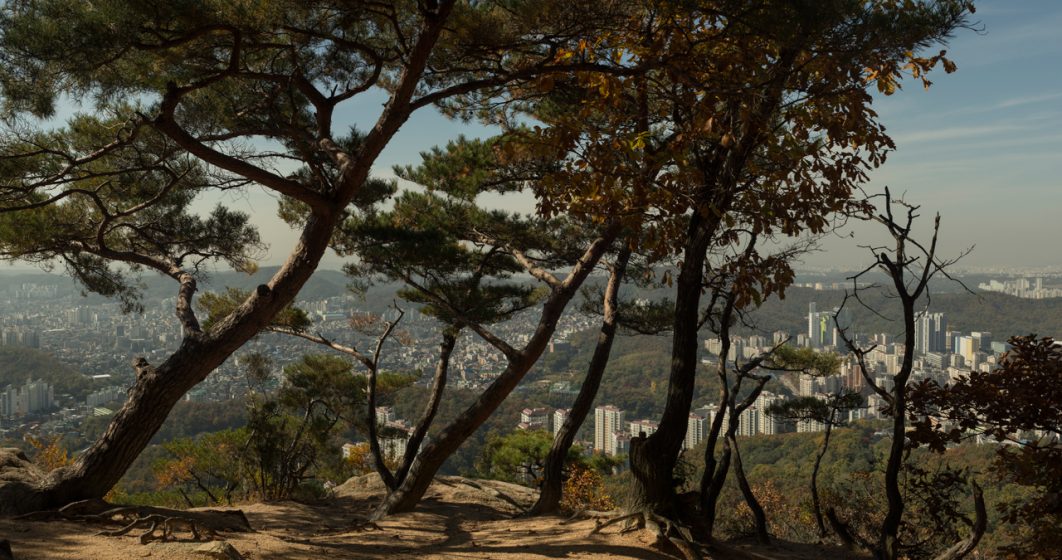
A favorite lunch spot, overlooking the northwest edge of Seoul city. (photo, Patrick M. Lydon, CC BY-SA)
Neither Einstein nor Wright could have claimed “access to nature” as an end-solution. Instead, they claimed something far more profound; that cultivating a relationship with nature is a foundation, a first step in healing our relationship with the rest of this earth, and in coming up with right solutions to our human problems.
This is true whether these problems are related to science, architecture, business, or the general art of building cities. If we don’t have opportunities to be in nature every single day, our ideas quickly stray from the ecological foundations that inform concepts like regenerative design and nature-based solutions. Without nature in our lives, the propensity for anthropocentric concepts to become unhinged from reality is immense. Without an anchor in the real world of nature, even the most well-meaning of projects can float off into fairytale castles, built on clouds of capitalism, materialism, or egotism.
When asked where to start in re-connecting an entire city into the ecosystem then, the answer seems obvious: start by re-connecting individual people to nature in meaningful ways.
Though missteps have been made here, many major Korean cities are lucky to have a large number of active everyday people who demand access to nature. Cities like Seoul offer good examples of urban areas that are trying to move in the direction of nature-connectedness, being helped by a vocal populace.
In many cases, this means un-doing a great amount of damage inflicted by a modern urban planning regime. For decades here, urban development has either ignored nature, destroyed nature, or followed the Corbusian scheme of body-slamming nature, so that it might submit to the image of man. Unfortunately, this path largely continues today in Korea, where the national standard still seems to include leveling entire landscapes to built walls of apartment towers, car-based infrastructure, and grandiose wind-swept public spaces devoid of activity. Even the so-called ‘smart cities’ such as Songdo still follow this paradigm. Yet there are clues of something else here in Seoul, too. In the older parts of the city—places where streams, forest gardens, and urban structures pay attention to and honor the landscape—there are signs of another possibility.

In much of East Asia, the historical roots of urban planning follow what is sometimes called the feng shui of a city. This concept can still be found in places, embedded in the materiality, shape, and orientation of people and city, growing in relation to the landscape and seasons.
Outside of East Asia, similar concepts have long existed too, from Camillo Sitte’s argument for a ‘natural art sense’ in our building, to the insistence of Lewis Mumford and his mentor Patrick Geddes that cities are natural phenomena, to Christopher Alexander’s Pattern Language. There are countless architects and planners in-between who have said as much about ‘natural design’.
As we look again at our cities today and remind ourselves what we love most about them, so too do we find similar themes. Our most treasured urban spaces are the ones that seem to sing in beautiful harmony, a song between a landscape and its inhabitants.

Is it too lofty a goal for our cities to sing in harmony with citizens? Can we not again build cities that function in beautiful harmony with the landscape?
For some of us, harmonious cities might be unthinkable. Certainly, in contemporary cities, concepts like feng shui or a city built to artistic fundamentals have been dismissed as nonsense. As a result, buildings in modern cities have no relation with their environment, let alone with each other. Towering structures shout egotistically about themselves. Humans are drowned in a sea of glass and steel. Creeks are paved over without remorse. Meadows are sprayed with weed killer. Mountains and forests are made private or bulldozed from existence. The land in cities is often polluted so badly that humans are routinely poisoned by their own food and water.
How could we possibly start a conversation about urban-nature connection, when our cities and the industries that build them seem to be in such a state of disconnection?
During my own youth, growing up in Silicon Valley of California, the impossibility to walk into an urban field, forest, or mountain seemed like an unhappy reality that just had to be accepted. If anyone really wanted to get into nature from the city, they would need to jump in a car and burn a tank of gas to do it. A dedicated coalition of land stewards has helped to change this situation somewhat since my childhood, and a few tech companies are even helping embrace urban nature. But at times it seems like developing virtual reality still takes precedence over building a connection to actual reality.
Having lived in Korea, Japan, and Scotland during the past decade, the view I held of this reality—and of what it means to have access to nature—has been gently pushed in some amazingly hopeful directions.
** Global Sacred and Cultural Connections to Nature **
In Japan, for instance, there exist deeply rooted social connections to nature. For some thousands of years of recorded history, there have been remarkably constant undertones of seeing forests, mountains, and water sources as sacred.
Traditions that express these undertones have moved delicately through the years. These traditions span multiple disciplines and practices including rituals, cultural legends and stories, arts and crafts but also, ways of foraging, fishing, farming, and building cities. Though on the surface each of these practices is different—and indeed, even within each discipline, the regional differences might appear to be endless—they all rely in their own ways on knowing nature, as a prerequisite to taking action.
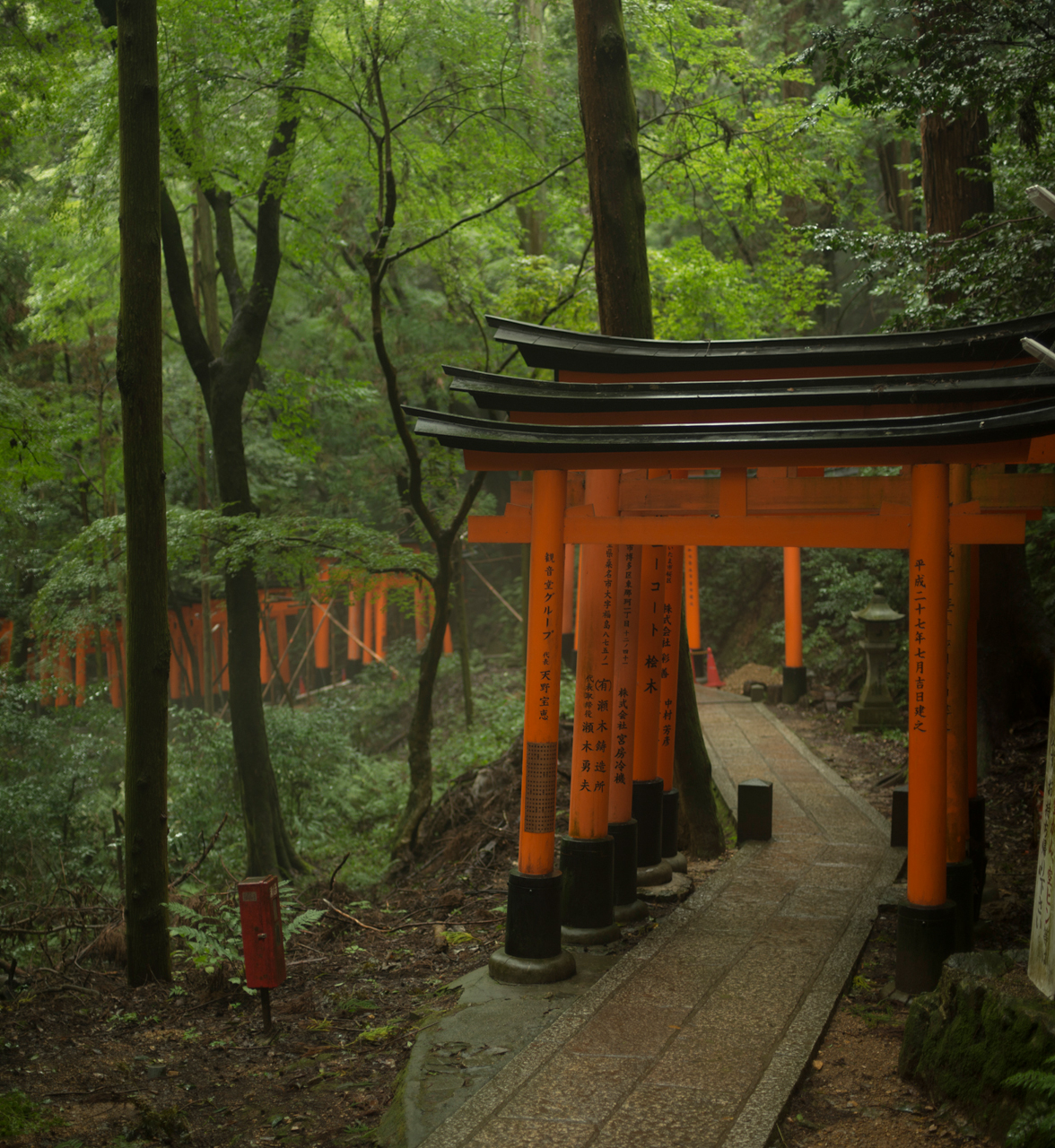
To know nature is to enter into a relationship with the environment. To know nature is have an intimacy with the materials we use in our work. To know nature is to have an intimacy as well, with the ecosystem which produces those materials. When our jobs continue to rely on this particular kind of relationship and intimacy, we enshrine in that work, an ecological understanding that can be maintained from one generation to the next.
This is what a sustainable ecological culture means. It is not about sustainable materials or sustainable economics or sustainable political laws themselves—these all change with the winds—but rather, about figuring out an underlying cultural mindset that helps us to understand who we are, and how we relate to each other and to this living earth.
This cultural mindset is not something that can necessarily be rigidly dictated or planned. Instead, it must be fluid, and this fluidity seems to happen most effectively when we incorporate ourselves and our work into that nature, as a part of our daily habit. It comes from the practice.
You could call this a spiritual practice. Not necessarily a religious practice, but an individual practice that acknowledges the aliveness—or animating force—of the world, and which seeks to participate fully in this aliveness.
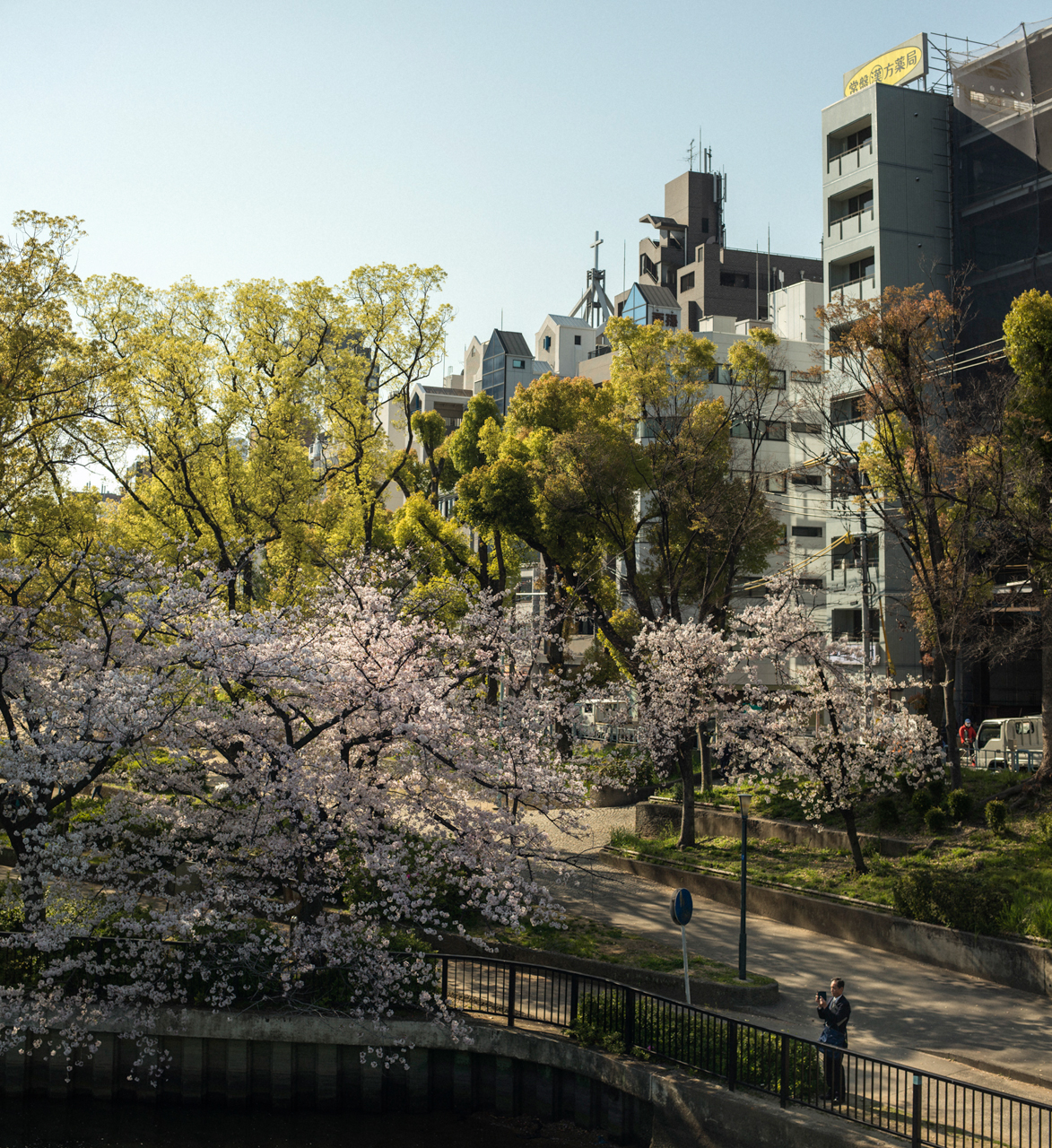
In much of the West, there is sometimes a belief that the spiritual and practical must be at odds with each other. Yet much of the culture that we find so fascinatingly beautiful in places like Japan—or Korea—recognizes the opposite to be true. The importance of relationships between humans and their environments is both practical and spiritual. These two ways of seeing and doing are not at odds with each other but are necessary complements to one another.
In practice, this way of thinking has been chipped away at by many human forces. However, in various ways, natural elements in Japan are still thanked, honored, and cared for to this day.
This accounts for at least part of the reason why, though urban areas here are often extremely dense, you’ll always find nature integrated into tight spaces in unique ways, and the ability to walk, bicycle or take public transit to expansive parks, nature reserves, mountains, pilgrimage trails, forested shrines, rivers, and recreation areas is readily available.
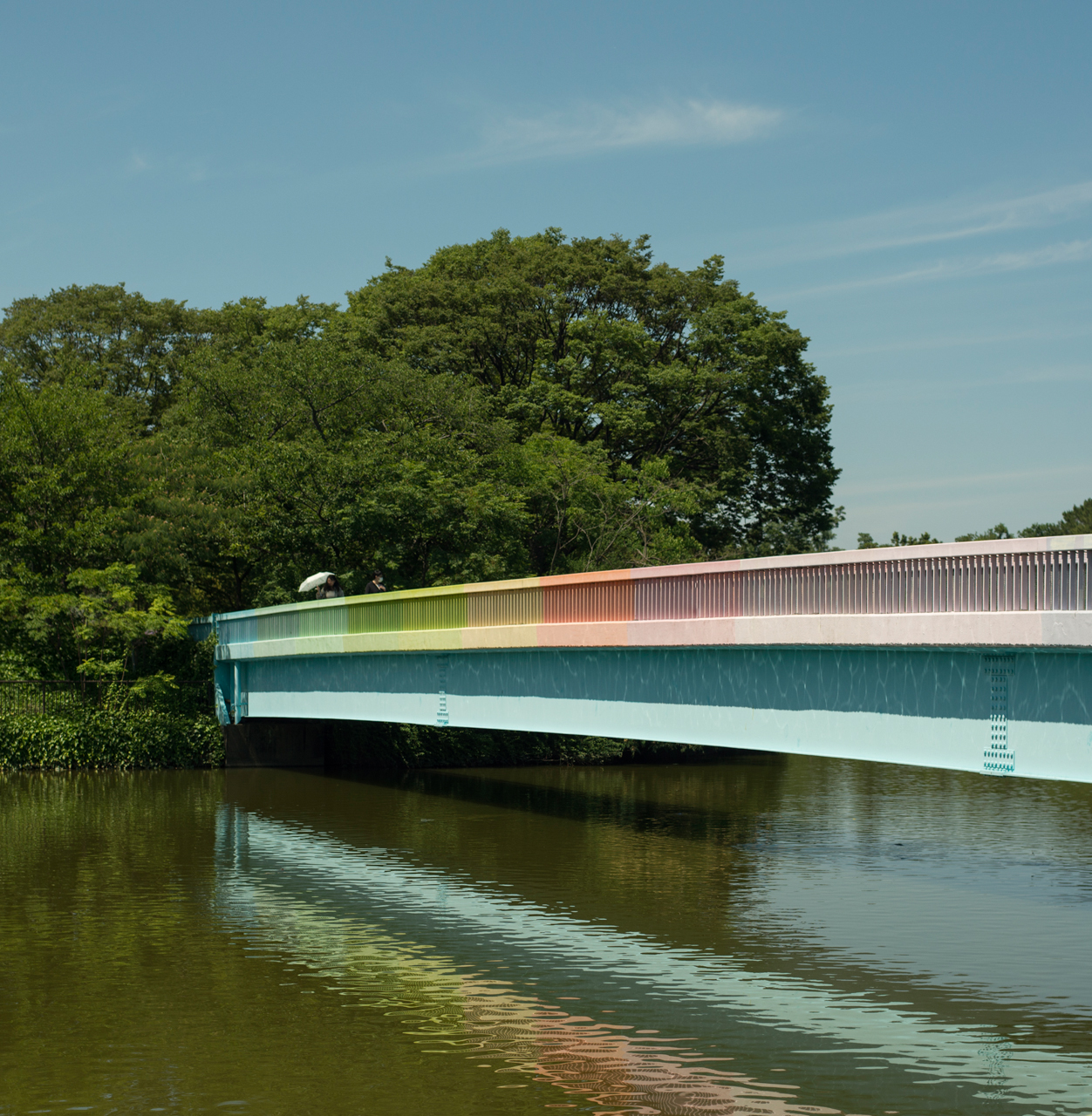
Similarly in Scotland, the understanding that a balanced human existence requires access to nature is well understood. In fact, it is enshrined in law.
Everyone in Scotland has the right to move respectfully through nearly all public and private land, or even to set up a camp and sleep. This Outdoor Access Code, as it is called, is both a right and responsibility, a pact where those who venture into the landscape are expected to “Respect the interests of others, care for the environment, and take responsibility for their own actions.”
The code was enacted on account of a people who see importance in expanding our connection to and understanding of “natural and cultural heritage.”

It is liberating, when nature is ample and accessible, where “trespassers will be shot” is not an option for dealing with land access, and where one can literally walk, rest, and enjoy being in nature, almost anywhere, anytime.
Such an access code, however, also requires a cultural understanding. This understanding takes time, it takes willingness, and it takes education of a population from youth through adulthood, about the responsibilities we humans have as members of this earth community. We must know not only how to take, or even how to give, but how to relate with and understand the living world.
In Scotland—as in most of the industrialized world—this understanding has waned, and this waning sometimes creates situations where legislations like the Outdoor Access Code are abused. However, we should be reminded that it is only with such rights in the first place, that an understanding of our responsibilities can truly be rekindled.
The right to access nature is a starting point on the path to sustainable, nature-connected cultures.
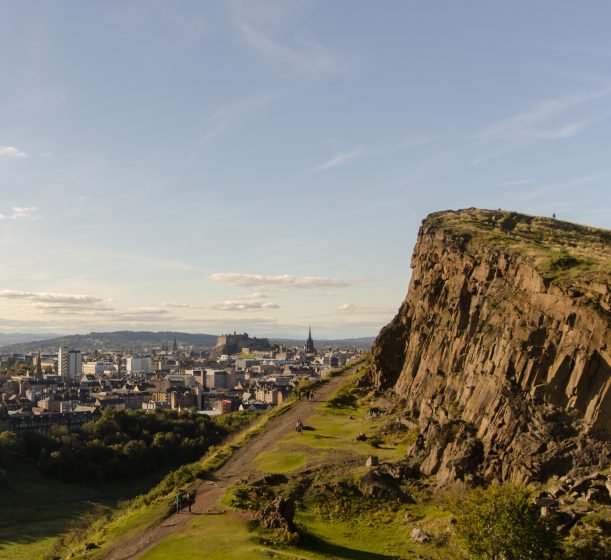
You and I have just done a little bit of globe-trotting through Japan and Scotland. Apologies for that. We are supposed to be hiking through a mountain in Seoul, and yet, here we are walking through Shinto shrines and meadows.
Nevertheless, it is telling how similar threads of thought run through these—and many other—cultures, no matter how different they might seem. These threads might be hidden where we live, but they are there, nevertheless. Just waiting to be woven into something beautiful.
But let us get back to Seoul, and our walk through Bukhansan National Park.
Turning to contemporary Korea, we find a country that is probably most well-known for endless rows of Soviet-style apartment towers, overly car-friendly planning, and severe air pollution. There are many urban politicians, academics, and activists making honest efforts, however, to reverse this image.
Some readers might know of the enviable mass transit proliferation, or even of the projects to tear down urban highways and restore the streams that were buried by those highways. In a slightly more subtle but wider scale movement, however, many Korean cities and towns have built thousands of miles of trails to provide public access through urban mountains and forests.

Though there have been plenty of ugly bumps along the way, Korea is quietly becoming a leader in urban nature access. Yet many of their best efforts have been inspired by looking at solutions from other cultures, in societies that are radically different from their own. Foreign concepts are studied, dissected, and then re-imagined, put back together in unique ways which are adapted to fit the local culture and ecological situations.
Another word for this is innovation.
** Dulle-Gil, and Innovations in Nature Access **
One of Korea’s such innovations for urban nature access is the dulle-gil, a kind of walking route that connects city and nature in a way that benefits people, environment, and commerce.
The dulle-gil came about in part because of an existing culture of walking around local mountains and rivers. On weekends, nature walks are something of a national event, with friends, or even three or four generations of a family going together, into the mountain on foot, with a full-out picnic in tow. Residents of Seoul love their local mountain Bukhansan so much, that on a good-weather weekend the mountain seems more like Disneyland—on the popular peaks, the lines certainly look similar.

Over the years, as the city’s population and tourism increased, the mountain became overly busy. The city went on a decades-long campaign to build more trails in other places around the city, many of them following traditional footpaths and foraging areas that have existed for centuries. The result is that today, an interconnected system of trails links the mountains, streams, hills, and forested land throughout the entire Seoul metropolitan area.
Yet even with all of these trails, on a popular weekend, Bukhansan was still overfull.
Part of the response was a new campaign to build a series of easier walking trails called dulle-gil. These dulle-gil avoid the more perilous mountain climbs and instead aim to connect neighborhoods by a mix of easier trails and local pedestrian-friendly streets. Typical dulle-gil routes are not deep in a mountain but instead flirt between the edge of mountain and city. These trails are popular with young and old who want to explore urban nature, yet who might not enjoy the steep vertical climbs and scrambling over cliffs.
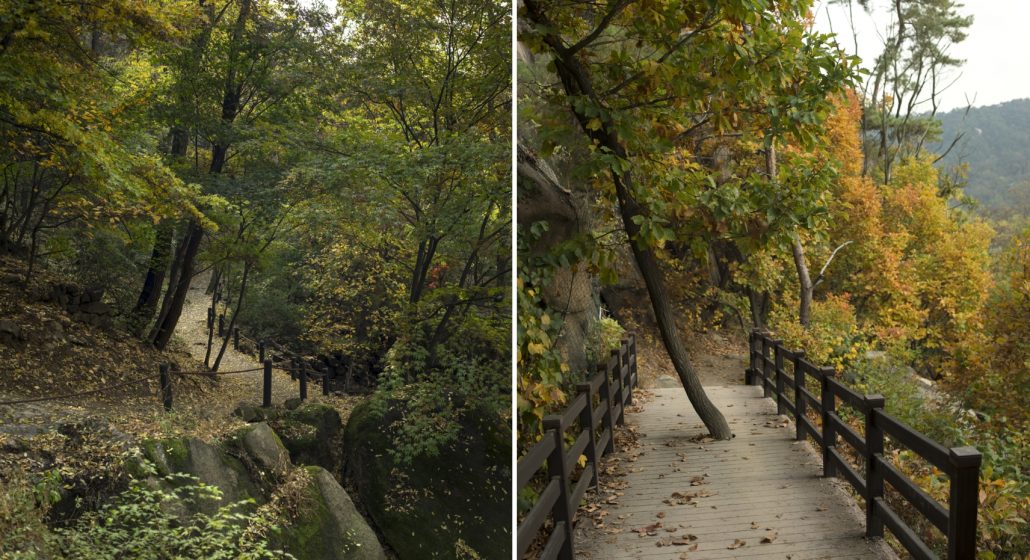
These walking trails form a network that includes the 157km-long Seoul Trail, 63km-long Bukhansan Dulle-gil, 19km-long Seoul City Wall Trail, and several others. Such urban trails have spawned an impressive internal-tourism industry, where residents can effectively become tourists in their own city.
It is not unheard of, for instance, to spend a weekend walking directly from one’s own neighborhood, through forest, field, river, and mountain, to the other side of the city along trails like the Seoul Dulle-gil.
During such an all-day walk, one might take a lunch picnic on a cliff, stop at a nature café with a view of the forest in the afternoon, learn about the species in a local creek, and enjoy an outdoor barbeque in the evening. At the end of the day, there are even plenty of options to stay the night in a hillside guesthouse at the foot of the forest. The next day, home is a short and easy subway ride away.
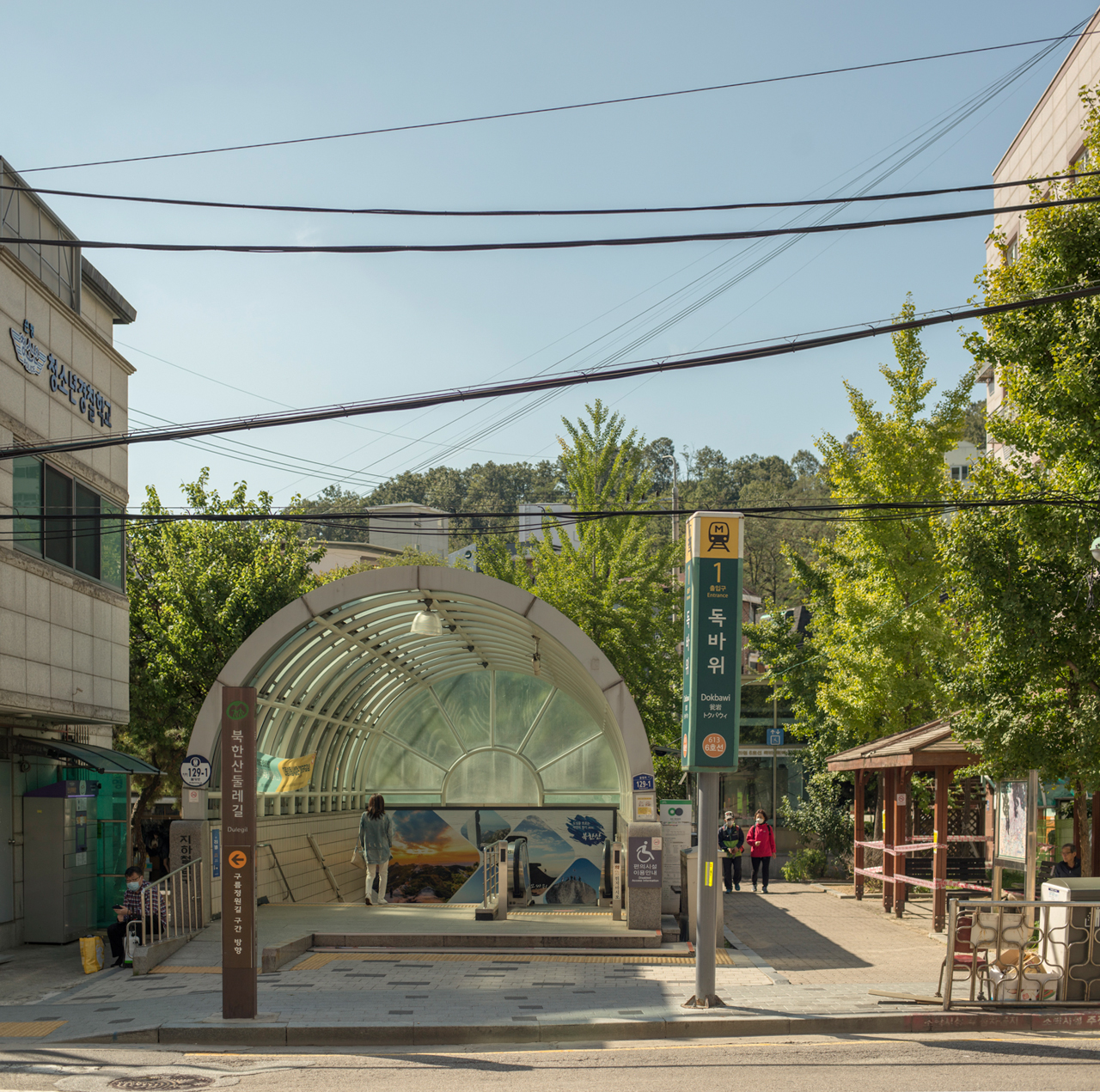
Cars are not needed for these experiences, thanks to the 23 subway stations with easy access to Seoul Trail, and 17 subway stations that will drop you off near the more central Seoul City Wall trail.
This kind of public transit access is one of Korea’s greatest social and environmental strengths. Even more surprising, much of this infrastructure was built only in the past few decades. In many major Korean cities, governments have gone to great efforts to make sure residents and visitors alike can not only get around the city but can also experience the biodiversity that threads its way in and around dense urban areas.
Paths like the dulle-gil are routes from here to there, and yet they are also opportunities. Places for anyone who walks them, to re-connect with the sacredness of the land. Some researchers even claim that walking these paths is a way to recover the authenticity of the human being. Taken in this light, these urban paths begin to feel reminiscent of other modern-day pilgrimage routes being revived around the world.
Indeed, the idea for these dulle-gil trails began not in cities, but in the more rural regions to the south, surrounding the magnificent Jirisan National Park. The success of these more countryside trails has spread widely, igniting a new interest in domestic travel. The experience of walking these trails has also inspired many young people to consider the charm of rural and village life. With so many of the smaller Korean towns and villages struggling to survive—and so many educated young people likewise struggling to find how they fit into the city—it seems a welcome phenomenon.

In a way, these trails are helping to mediate some of the more reckless versions of urbanization that typically pay little attention to human and environmental wellness. A few days walking through picturesque old towns in the countryside, if anything, suggests the possibility of another way.
Can we find our way to a balanced flow between urban, rural, and natural systems—both social and ecological?
** Cities Win When They Celebrate Local Nature **
Continuing my own descent from Bukhansan into the city, I pass through a grove of pines along dusty granite rocks, a signature of urban development here. It is a sure sign that we’re close to the city. Passing through the forest, I arrive at Bulgwang an hour or so early. Fresh mind.
After passing the threshold of the forest, and entering the valley of apartment towers, I feel fortunate to have this breathtaking mountain park in my backyard. It is only so, however, because public demand for nature access here has been persistent.

With continued demand for nature access, the rivers that bring water from the mountain into the Han River are also recently coming alive with natural wetland plants, and waterfowl sharing space with humans. Nature’s own regenerative infrastructure designs are starting to replace degenerative concrete lining and highways that once aimed to quickly move vehicles and water through the city.
A new rhythm of urban slowness is developing, slowly.
None of this was easy. Those who visited Seoul in the 1990s saw a city that seemed to pride itself on the destruction of any living thing for a highway, 14-lane road, or apartment tower. Back then, the slightly more environmentally sane Seoul that is emerging today seemed like an impossible dream. Yet here it is. A seedling, perhaps, but one that is sprouting well.
In all of these positive examples, the point of critical importance seems to come back again to the act of knowing ourselves and our cities in relation to local natural landscapes. Could American cities also undertake urban planning projects with such a seemingly radical foundation as nature-connectedness? If we want to become global leaders—and, somehow, I think we do—then the answer can only be yes.
When citizens and leaders decide that they love nature more than they love speed and convenience, they will succeed in building ecological cities.
Although to be fair, some conveniences do just happen to align with local nature. Conveniences like the spring-fed public foot bath in Daejeon—a city 50 minutes by bullet train from Seoul.
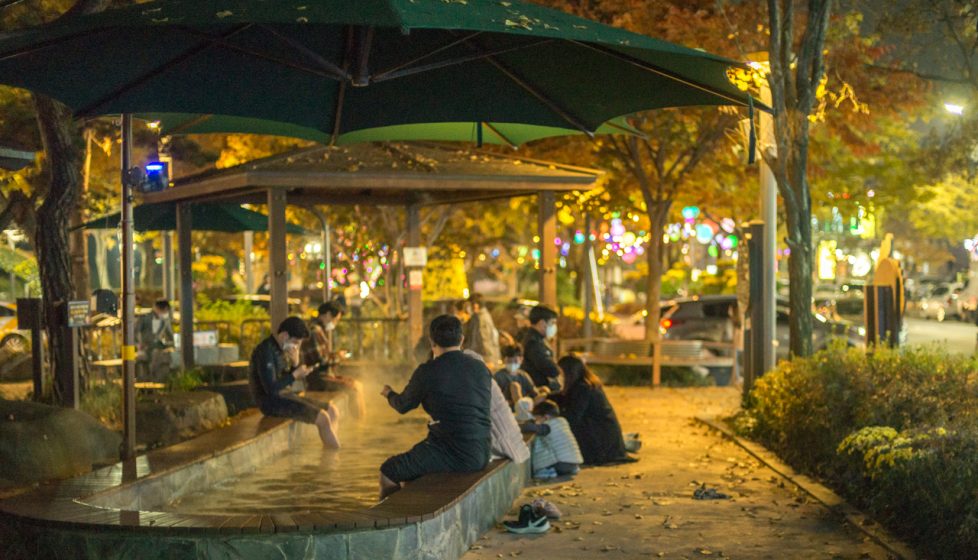
What are the local nature-based innovations in other cities around the world? There is no replicable plan for successful projects, and no city implements urban nature or access to it in the same way because our local urban ecosystems—cultural and natural—are all unique. This is not a ‘road block’ to scaling up, but instead an opportunity for local creative solutions together with our environments. It is a chance for cities again to reclaim their uniqueness and an exciting, authentic sense of place.
Instead of removing, restricting, or covering up our ecological features, cities benefit immensely when they learn how to highlight them, putting in place programs that enable free public access, and that encourage civic responsibility and care. When done equitably, such urban nature access benefits small businesses, local economies, and human quality of life across age, race, and income levels, while simultaneously benefitting the environment.

I imagine cities where this narrative continues, and where:
- More people choose to walk, wheel, hike, and bicycle through what slowly becomes an urban-nature heaven, and motorized transit, while still available, finds a niche that does not infringe so heavily on social and ecological life
- Preserving, restoring, and providing reasonable access to an interconnected network of nature corridors becomes the standard, and highways and roads become the minor exception
- Cities learn to celebrate what makes them culturally and ecologically unique, and the practice of bulldozing that uniqueness virtually disappears
In providing meaningful access to nature in cities, we are not solving all of these problems outright, but we are planting the seeds, increasing opportunity for people to discover new ways of growing more resilient, beautiful, ecological urban lives. Lives where people and the environment both win.
It all starts—as Einstein and Wright hinted—by experiencing ourselves in nature, and the nature in ourselves.
Patrick M. Lydon
Daejeon
This essay is also available with full-size images at The Possible City.


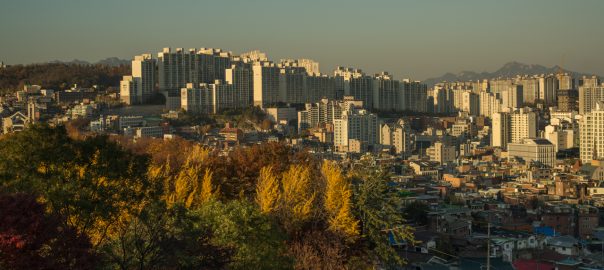
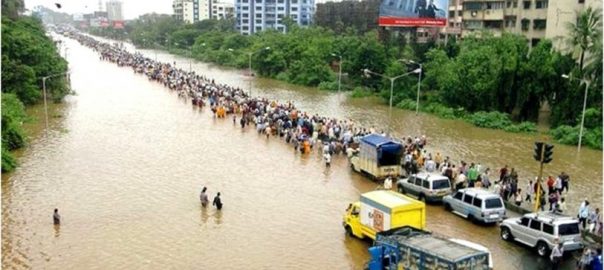


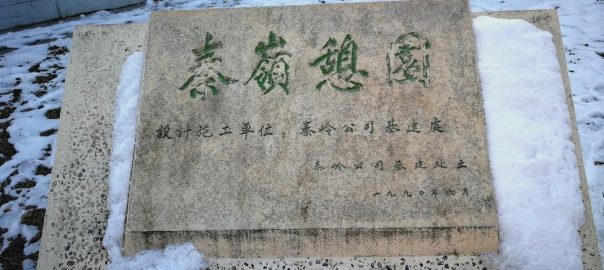
Leave a Reply